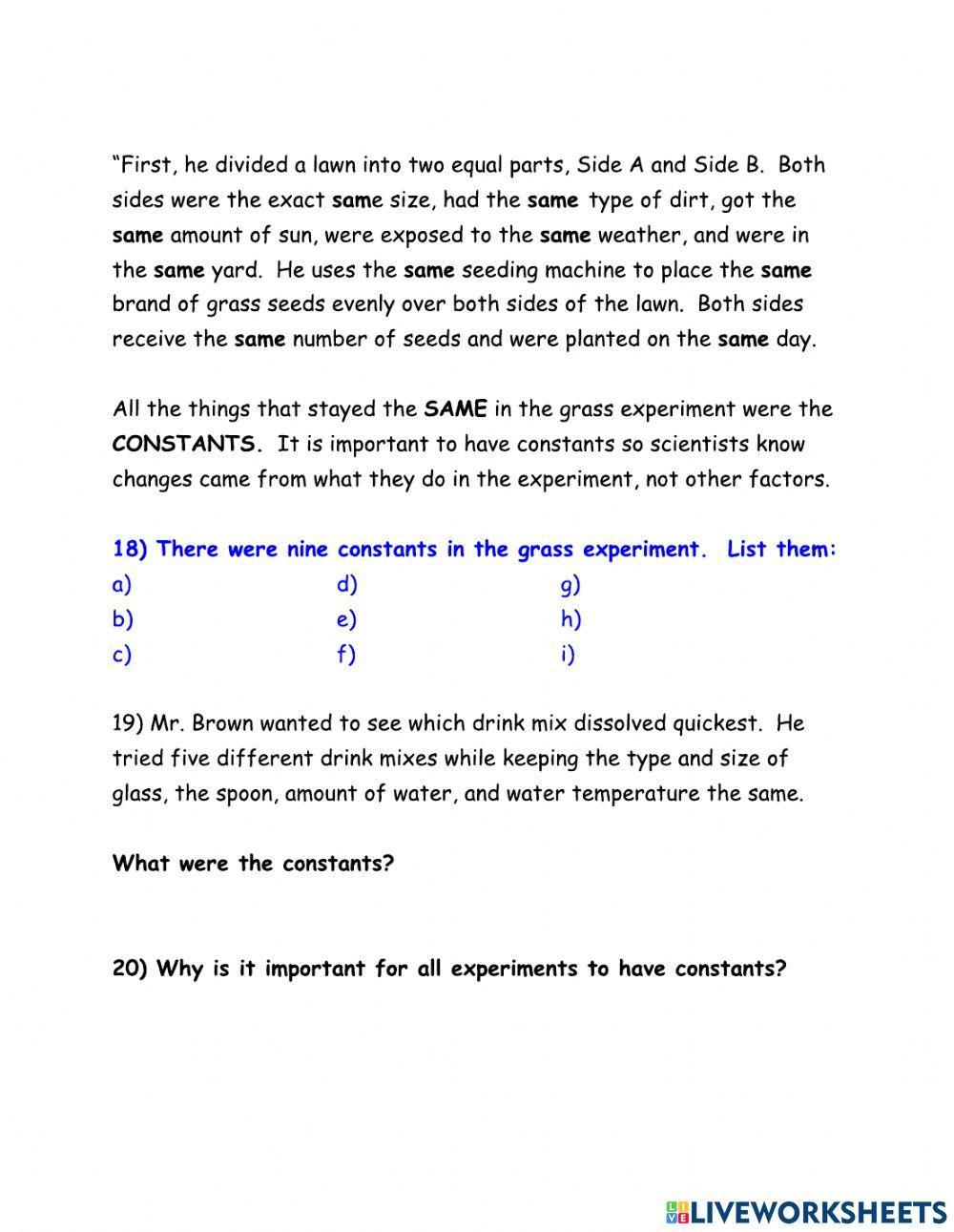Loading ad...
Member for
3 years 7 monthsAge: 11+
Level: 5-12
Language: English
(en)
ID: 882975
05/04/2021
Country code: US
Country: United States
Main content: Scientific Method (2010525)
Students will review the scientific method steps, vocabulary, and concepts including constants and variables.
Other contents: Reading, Reading Comprehension
Share / Print Worksheet






